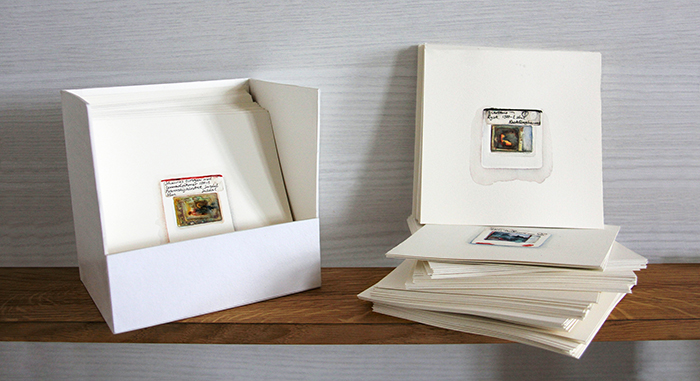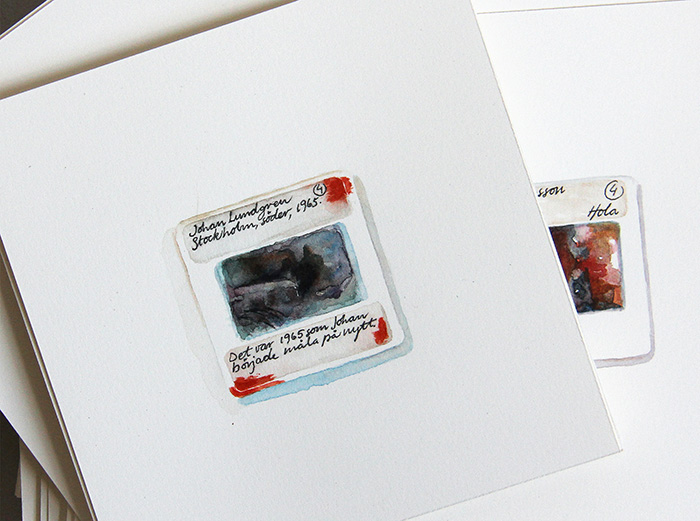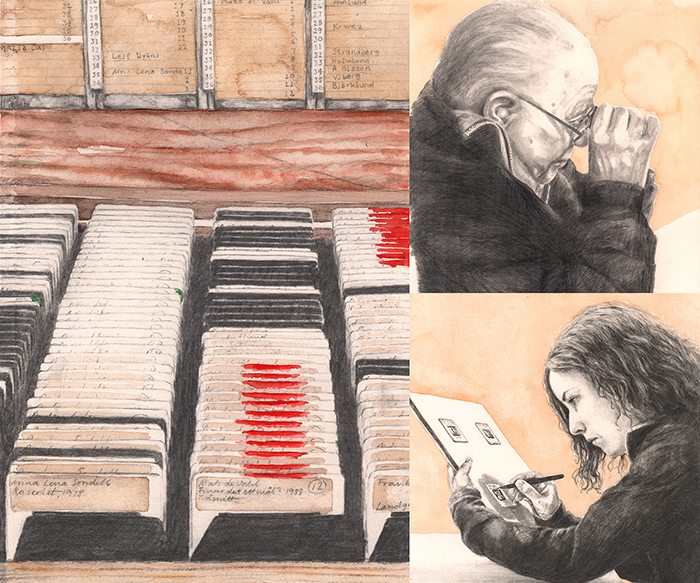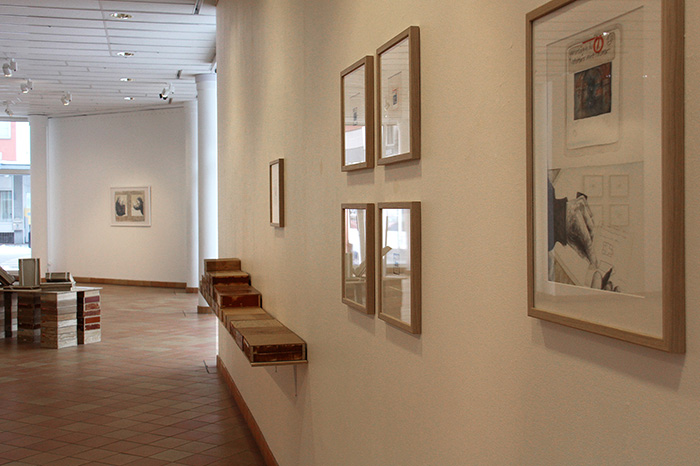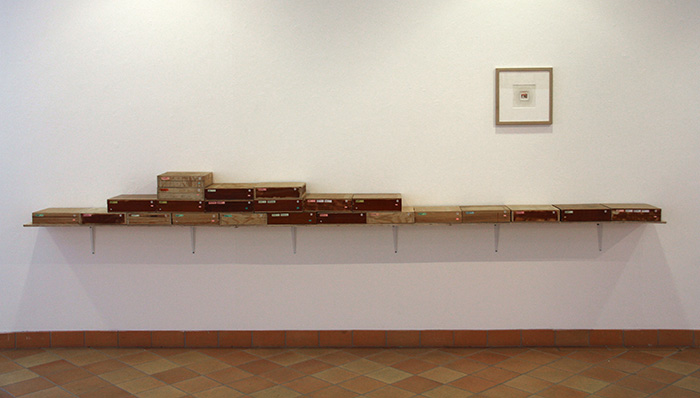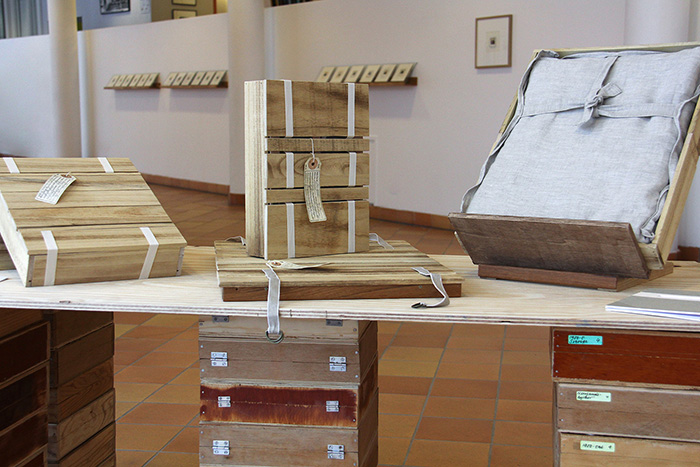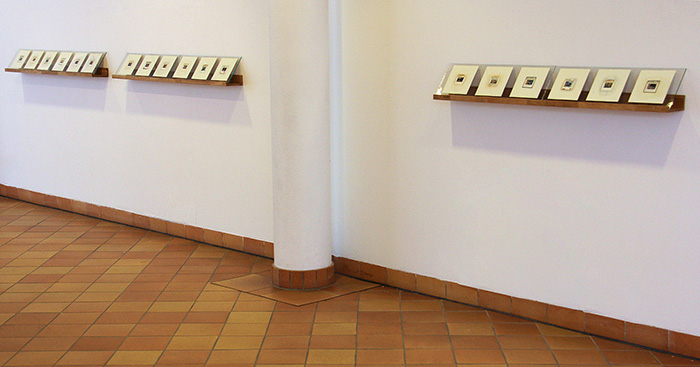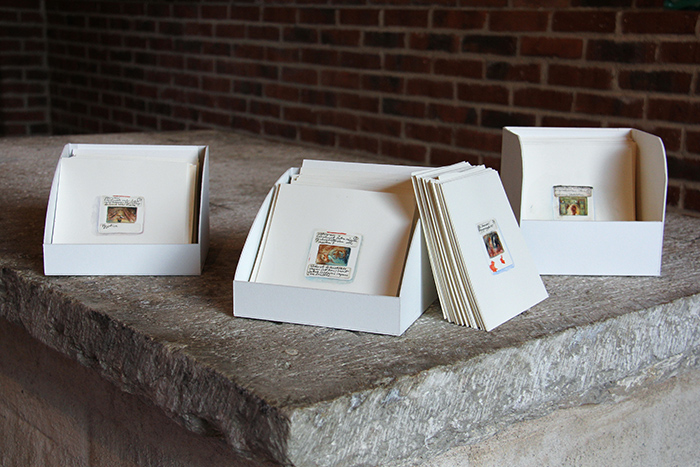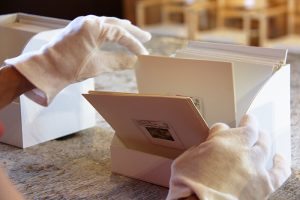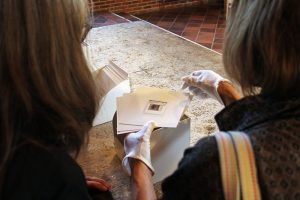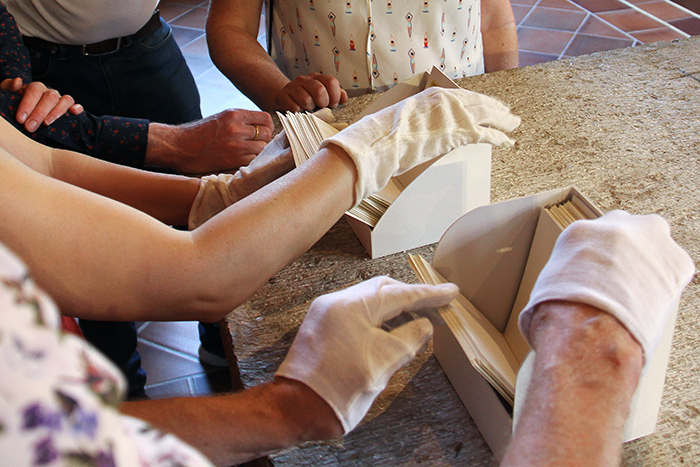At 16 I was asked by my grandfather if I wanted to inherent his archive of art historical slides. There are about 25,000 slides. The archive was his life time achievement and I said yes without hesitation. Today I work with my inheritance. Here I present images and written thoughts. I have exhibited this work on two occasions. Inside the chapel of Franciscus in Nyköping in 2018 and at Kramfors konsthall in 2019.
I’m in my grandfather’s room, in my grandfather’s basement. A separate room, with its clear logic. I hear his voice. He recalls. The facial expression changes, a spark lights up in prying eyes. Then he turns his gaze upwards, draws with amusement a breath and right there begins a story. What he says came from the picture, the photographic slide, which is ultimately a presence of an absent thing.
He says:
Most of these pictures I have taken myself, during many trips. And often I have a story to tell about the origin of each image. Here during the baroque, for example, when I wanted to photograph Innocentius X, I did not have permission to photograph, but I took my chance and entered with my camera and tripod. I started to arrange for photography when a caretaker discovered me. He was very upset. Instinctively, I had the feeling that this young man was interested in photo technology. So I showed him a little about how to set diaphragm and self-timer. So he didn’t think about it, but in the end we took the pictures I wanted. The caretaker took them for me.
– Now we shall see here, where we have number 27 and there we have Innocentius X. Here you have a viewing loupe.
In the vicinity of death, or near things that washes over you without control, life can be found in the little things. To the small object is added another. For some, this work is going on for a lifetime. Finally, there is a complete archive. It’s easy to get obsessed. The joy of losing oneself. It is a conscious choice; to become absorbed. To be completely immersed in the little thing so that everything else fades. The routine’s repetition that creates order and security. Returning to such a room does not have to be about self-centeredness. Or a misanthropic behaviour. It is a place to rest in, somewhere to return. The place offers an opportunity to stop, find interest and security. It is a closed-off but hopeful place. Self-controlled, without external requirements. The ordered room remains the same, clear, stable and logically arranged.
Things are not lifeless. I think of Walter Benjamin’s way of life. He escaped the Gestapo to America. When he learned that his library was confiscated, he took his life. Losing or removing important objects can sometimes be perceived as the loss of a loved one. Do not keep your own story so cramped against your chest. Begin a collection. Pick up a stone and give it meaning. If necessary, build an entire archive.
I draw the silhouette of a slide. I fill in an unclear motive, a present representation of an absent thing. A church interior in Ytterlännäs. Maybe I paint lime paintings by the Alfabetsmaster or a madonna from the workshop of Haaken Gulleson. I can’t tell. Totally incomprehensible, my grandfather would probably say. It is good. I’m thinking: I’m not talking through him. He doesn’t talk through me. No one stands alone. No one is authoritarian. Both are in motion, indefinite. We play restlessly and sometimes the word exchange becomes sharp, but usually only gestures, uncomfortable stands and some very strict gazes are visible. Yes, my mother said early on that I inherited his strict gaze.
In Pierre Bourgeades “The Cabinet” you find Focker who must escape from his home. But he cannot leave his cabinet of massive oak that his grandmother left behind. Every morning he cuts loose some chips with his knife and eats them. The day after has had eaten up the cabinet he goes down into the sewers. He crawls under the wall and exists out to the West Berlin. Sometimes we must do things even if they are difficult to explain.
Grief and liberation are strangely related. It is the duty of the survivor to get the dead to live on. I say: I don’t give a damn! I have painted a hundred of slides that do not say anything about what my grandfather wanted to say with his tens of thousands of slides. I have many more to do. He would not understand my obsession, but he understood his own. I draw a new silhouette and do not want to save. Neither arrest nor shelf. The goal is to allow the fading, yellowing, reddish image to disappear, as it is meant to. It is a struggle not to feel failure. Some things we just need to do. I absolutely understand why Focker needed to eat the cabinet.
It’s about not hesitating. The doubt must exist, but must not become cowardice. It must be driven forward. All voices that speak, speak simultaneously. The voice that defends, the voice that defies, the voice that pushes through, the voice that reverses. There’s a complete chaos of wills that move in different directions. There are no duties (of course I lie).
In my pictures I have dialogues with a dead grandfather and the dead is the one who no longer responds. He has no voice to defend himself with. Much should the memory of the dead withstand.
Images from the exhibition “Helighetens Bilder”, at the Francis Chapel in Nyköping, Sweden, June 2018:
